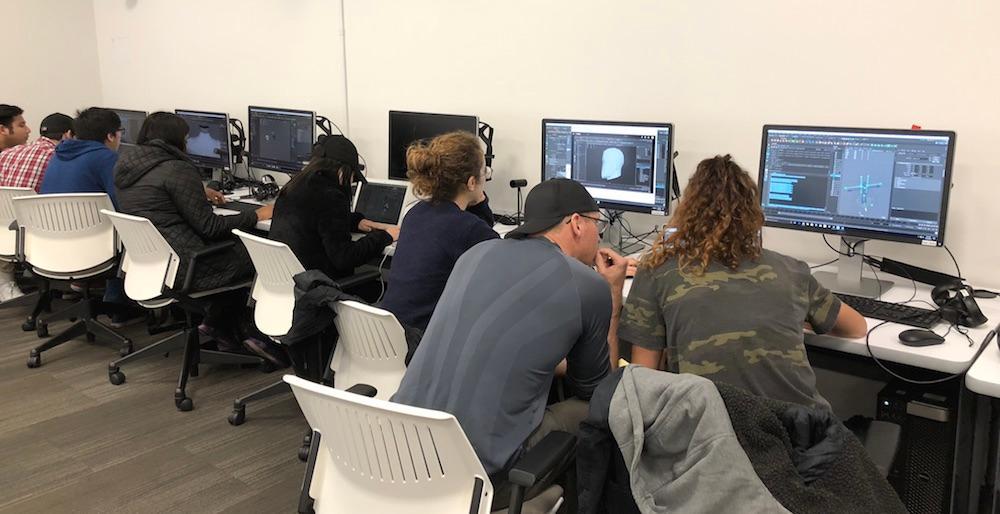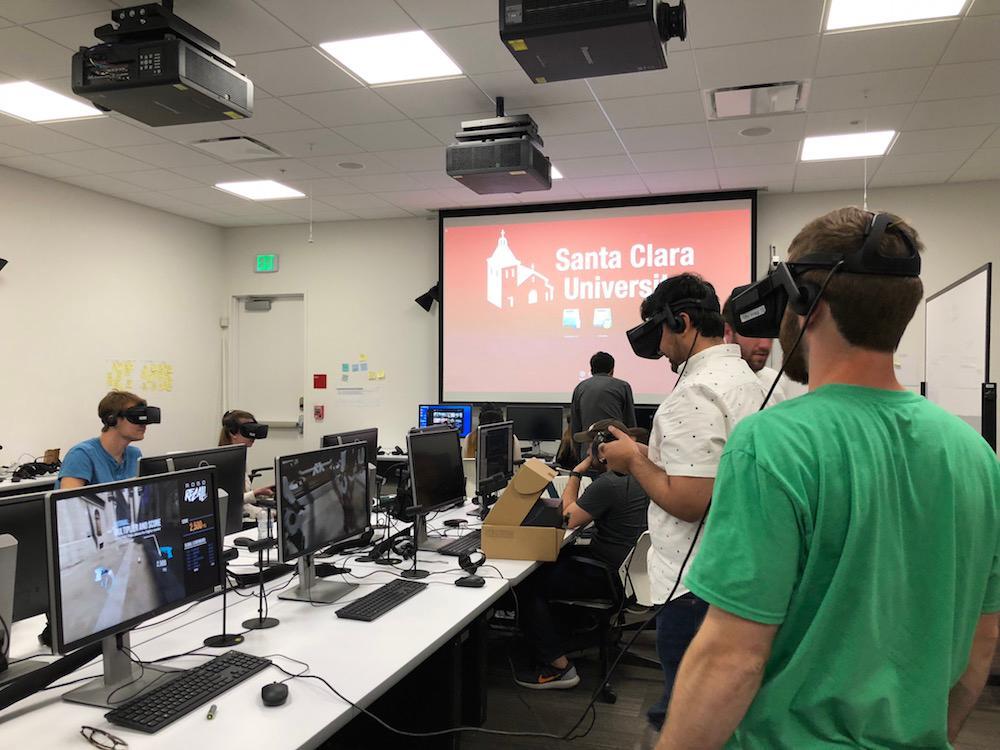
Imaginarium
The Imaginarium opened in the Edward M. Dowd Art and Art History Building in January 2017. The space was conceived as a virtual reality (VR) and augmented reality (AR) “sandbox” in which faculty, staff and students could explore these new technologies. The lab started modestly, with four computer workstations, a few Oculus and HTC headsets, some software and a projection system. Now, just 15 months later, the Imaginarium has grown into a fully equipped VR/AR lab with 29 completely outfitted stations.
The lab serves multiple purposes, including providing instruction in VR/AR, facilitating curriculum innovation, and fostering collaborative research. Soon after opening, we offered our first instructional classes to two faculty members from Philosophy eager to integrate VR into their own teaching and launched our first Department research project. That project, which is still ongoing, seeks to model all six of the Missions of Santa Clara de Asís. In addition, the lab is excited to now host classes in childhood education and 3D animation, to lead a faculty learning community, and to hold open drop-in hours run by experienced student workers. The VR team is currently collaborating with faculty on several research projects, including one that seeks to render four-dimensional projections in three dimensions.
In fall 2017, the first class for students was launched, the VR Bootcamp. The bootcamp is a yearlong course in which students from different disciplines develop basic skills of VR equipment. Working in teams, the students apply their skills toward the creation of a VR experience that seeks to answer a research question or solve a problem. During the winter quarter, student teams rolled up their sleeves to design and author their own experiences. The students received feedback and advice from leading industry professionals and members of the Studio Art faculty.
During the spring quarter, the student teams are testing and polishing their projects for submission to the Imagine That! competition, with judging and prizes to be awarded in June. In addition, an AR project is underway to enhance the Department of Theatre and Dance spring production of The Glass Menagerie.
The lab would not have been possible without the generous support of Susan and Andrew Wright, the vision of College of Arts and Sciences Dean Debbie Tahmassebi, the leadership of Associate Deans Stephen Lee and Rafael Ulate, the support of Art and Art History Chair Kathy Aoki, and the day-to-day efforts of Max Sims and his talented team of student assistants.

